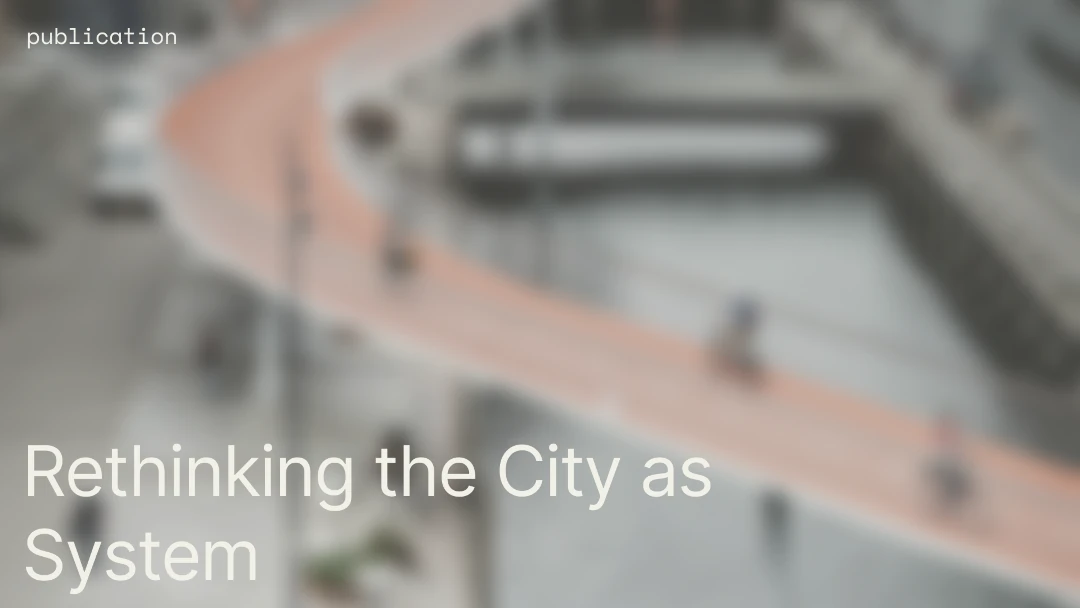
Bio
Armor is an architect by trade. Through his very technical education in Madrid at the Polytechnic University, he has developed a deep interest in materials and the innovations achievable through materiality. Having worked in different positions across the years, including firms such as Bjarke Ingels Group and MVRDV, he is now an associate at the Sustainability Research Institute at the University of East London where he also teaches at Master of Architecture level. Together with the students and the Institute he explores the potential of different materials and pushes the boundaries to change the built environment.
It is very clear that you are very driven by material exploration, what drives you the most?
The architectural material palette is quite limited — about 5-6 different materials such as aluminium, brick, concrete, and then different types of glass.
There is very little information on the many alternatives out there, so exploring outside these boundaries is what drives me the most. I have been tapping into agricultural waste and I see agriculture as an industry that has almost the same environmental impact as construction. Perhaps if we marry both industries and use the agricultural waste to create elements planted into construction we could make great progress for both. Focusing on this research could really provide solid opportunities for material alternatives. That was also why and how Sugarcrete emerged.
You have mentioned the limited material palette in architecture and since you are focusing on exploring new alternatives, what are the main barriers for pushing the sustainable agenda forward?
The main challenge is trying to implement something new or different in a real life project. There are countries that are more advanced than others. But there is a lack of a global policy on biomaterials and how they should be used. We need countries or politicians that are bold enough and will push this agenda. Of course we cannot ask the exact same 1:1 qualities we ask of concrete or bricks from a biomaterial, because at the moment we have quite a few barriers, especially technological. However, there is a code which is currently applicable to all materials in the same way and this should be more flexible and especially more regarding materials that try to have a positive impact. Unless political or institutional levels change, I feel that the construction industry is never going to change. We need rules that will at least demand for a percentage of the building to use biogenic materials for instance, or materials coming from a certain production level or area.
Political changes are definitely a blocker, however we are seeing an increase in LCA methodologies and limitations arising across countries. Working with new materials, how does this affect or support you?
I think this is a very controversial point. So far, we have tried to calculate the LCA of the materials, while also starting to account for the economical allocation. This is where the controversy happens. Because some people think that byproducts of industrial processes or agricultural processes have no value and other people are claiming that instead they do and that value should be considered within the LCA. So we are trying to allocate it in a way that is proportional and fair, but this can be very difficult to track.
And this is something that should be an integral part of the design process. For every single project you cannot reuse some of the data because the materials have totally changed and the conditions in which they are produced change too. So the data evolving along with the evolution of the material is the key, especially as more and more people start integrating them into their work.
I liked what you said earlier, marrying 2 industries that have similar struggles. You work a lot with agriculture and construction, which seems like a great way to innovate materials. How do you think we can accelerate the use of bio-based materials?
Agriculture and construction are the two largest industries in the world and I think that they have never really worked together. The largest crop by production volume can marry the largest requirement of another industry — bricks and fabrication of walls for example. This kind of tension to me is very interesting because on the one hand, you have an industry that is extremely productive and needs to be as efficient as possible. And then you have another industry that requires more and more materials and the way those materials are produced hasn't changed in the last hundred years. Even when looking at the current most typical bio-based material, wood, we run into a big problem: forestry is limited. It's a product that we buy and we use freely, because we think that it just comes from an endless source but it's taking a big toll on the planet. We will soon realise that all the construction that we are planning in the next 5-10 years is going to be the last thing that we're going to build as human beings. There will be no more resources to continue building. So I think there needs to be a radical change and besides industry innovation we need to start considering biomaterials for all retrofits. And then go beyond.
You just mentioned that a radical shift needs to happen, this of course concerns many areas. What do you imagine the built environment should look like in 2030?
Good question. Firstly, we will reuse existing buildings and structures and almost completely stop demolition. Demolition should be prohibited by law, except of course if there is a risk to the structure integrity. We will reuse as much as possible of existing structures or we will reuse them for something else. Secondly, including bio-based materials that have a positive impact holistically. And finally, which probably is a bit idealistic, but buildings should be “reprogrammed”, meaning they should be transformed or modified without the need of getting rid of core elements. We should be designing structures that can be adapted over time for different uses and circumstances. This versatility and flexibility is crucial. We will need to change the way we live and we work and it will happen in our generation and in the generations to come. So architecture will need to lead the way and fully adapt to that.
Finally, the last question is free for interpretation, you can answer it as an industry professional or just as a person. What is your advice for those who strive to change the industry for the better?
I always advise my students to be bold. Try to challenge what is established. Architecture is a very rigid profession that has been following the same type of design process, the same thinking and design outputs, for way too long. It's becoming very computer and virtual based, while less and less about material and craft. So maybe we need to go a little bit smaller and back to a more human scale.




























